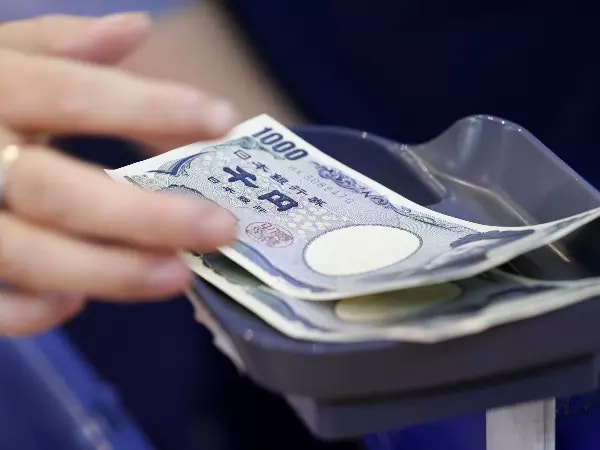Yen is performing its best since the 2008 crash. Here's why.
Discover why the Japanese yen is seeing its best performance since the 2008 crash. Learn how rising unemployment in the US, potential Fed rate cuts, and increased market fear are impacting USD/JPY and global markets.

Key Points
- The Japanese yen surged by as much as 8% this past week, with USD/JPY falling below 145.00 for the first time since January.
- US unemployment rate rose to 4.3% in July, stoking fears of a potential recession.
- Fed Funds futures price in more than a 35% chance of US interest rates falling below 4.0% by 2025, raising speculation of an emergency rate cut.
- USD/JPY dropped from 160.00 to 145.00 within a month, with potential further declines as the interest rate differential narrows.
- The S&P 500 Implied Volatility Index (VIX) surged above 60.00, indicating increased market fear and a higher chance of a crash.
JPY surges +8% in best week since '08 financial crisis
The Japanese yen surged by 8% from last Monday, marking its best performance since the 2008 financial crisis. The USD/JPY pair dropped below 145.00 for the first time since January, driven by flight-to-quality demand amid heightened stock market volatility. Investors flocked to the yen, traditionally a safe-haven currency, as significant market turbulence and increased fear took hold. Adding to the turmoil, the Nikkei (Japan's counterpart to the S&P 500 or Dow Jones) experienced a dramatic 12.4% drop in the Asian session Monday, marking its worst daily change since the 1987 "Black Monday" stock market crash.
US employment stokes recession fear
The US unemployment rate rose unexpectedly for the third consecutive month on Friday, reaching 4.3% in July. This increase has intensified fears of a potential recession as the labor market shows signs of weakening. The rising unemployment rate is raising concerns about overall economic stability and future growth prospects, pushing the narrative from inflation fears to recession worries.
Emergency Fed rate cut coming?
Fed Funds futures are currently pricing in more than a 35% chance that US interest rates will drop below 4.0% by 2025. This speculation suggests that the Federal Reserve could implement an emergency rate cut to address the growing economic challenges. With only three scheduled meetings left for the year, traders are closely monitoring these developments for potential impacts on the forex market.
USD/JPY carry trade could crush the dollar
The difference between US and Japanese interest rates, which currently stands at +5.5%, could decrease to less than +4.0% by 2025. This narrowing gap in interest rates might significantly impact the USD/JPY carry trade which has been so popular in recent years, potentially leading to a further decline in the US dollar. Such shifts could create substantial movements in currency valuations, especially if the Fed implements aggressive rate cuts.
Will the US dollar crash?
The USD/JPY pair has plummeted from 160.00 to 145.00 within a month, raising questions about the potential for further declines. Notably, the pair traded near 100.00 in 2020, indicating the possibility of significant downward movement if current trends continue. Traders are cautiously watching for signs of a deeper crash, considering the historical context and current economic data.
VIX, yen surge as S&P 500 fear rises to highest since pandemic
The S&P 500 Implied Volatility Index (VIX) has traded above 60.00 for the first time since the pandemic, reflecting increased market fear. As options traders price in a higher chance of a market crash, both the VIX and the Japanese yen have surged. This heightened anxiety underscores the current uncertainty in the financial markets, with safe-haven assets like the yen and Swiss franc gaining significant bids.
How to trade US dollar
- Open an account to get started, or practice on a demo account
- Choose your forex trading platform
- Open, monitor, and close positions on USD pairs
Trading forex requires an account with a forex provider like tastyfx. Many traders also watch major forex pairs like EUR/USD and USD/JPY for potential opportunities based on economic events such as inflation releases or interest rate decisions. Economic events can produce more volatility for forex pairs, which can mean greater potential profits and losses as risks can increase at these times.
You can help develop your forex trading strategies using resources like tastyfx’s YouTube channel. Our curated playlists can help you stay up to date on current markets and understanding key terms. Once your strategy is developed, you can follow the above steps to opening an account and getting started trading forex.
Your profit or loss is calculated according to your full position size. Leverage will magnify both your profits and losses. It’s important to manage your risks carefully as losses can exceed your deposit. Ensure you understand the risks and benefits associated with trading leveraged products before you start trading with them. Trade using money you’re comfortable losing.
